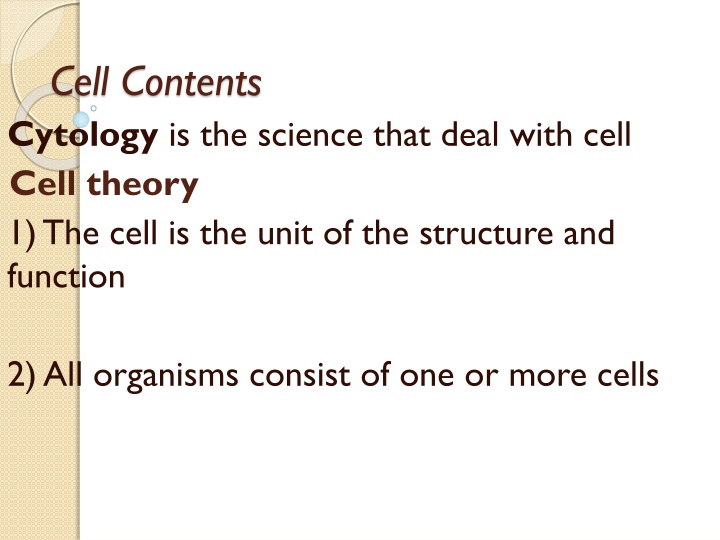
Exploring the World of Cells and Starch in Plants
The field of cytology delves into the science of cells, highlighting the cell theory that states the unitary nature of structure and function in all organisms. Plant cells are composed of various components like cell walls, protoplasts, living and non-living substances, and metabolic products. Starch, a carbohydrate, is a key element in plants, playing a crucial role in energy storage and metabolism. The types and characteristics of starch in plants, including primary and secondary starch, are detailed, along with the formation of starch granules. Differentiating features such as hilum shape and granule composition vary among starch types like maize, rice, and potato starch.
Download Presentation

Please find below an Image/Link to download the presentation.
The content on the website is provided AS IS for your information and personal use only. It may not be sold, licensed, or shared on other websites without obtaining consent from the author. If you encounter any issues during the download, it is possible that the publisher has removed the file from their server.
You are allowed to download the files provided on this website for personal or commercial use, subject to the condition that they are used lawfully. All files are the property of their respective owners.
The content on the website is provided AS IS for your information and personal use only. It may not be sold, licensed, or shared on other websites without obtaining consent from the author.
E N D
Presentation Transcript
Cell Contents Cytology is the science that deal with cell Cell theory 1) The cell is the unit of the structure and function 2) All organisms consist of one or more cells
Plant cell Cell wall protoplast Living substance Non-living substance Metabolic products Like, protein , , alkaloids, tannins Glycoside, ca-oxalate Food storage like, starch, Plasma membrane mitochondria nucleus plastids chlorophyll Golgi body ribosome's
starch Starch = carbohydrate consisting of a large number of glucose units joined together by glycoside bonds. Pure starch white, tasteless and odorless powder that is insoluble in cold water or alcohol Blue color with iodine(identification) starch generally contains 20 to 25% amylose and 75 to 80% amylopectin
Starch type in plant Primary starch = from photosynthesis in chloroplast Secondary starch = store in tubers Convert to glucose
Unheated starch granule Heated starch granule
STARCH starch occurs in granules of varying size in almost all organs of plants, found in roots, fruits, rhizomes and seeds. Starch granules may simple or compound, compound granules formed by aggregation of a large numbers of simple granules
Hilum: is the starting point of formation of starch granules, the position of the Hilum either central or ecentric. There are different shapes of Hilum (dot, curved, multiple clefts). Concentric rings : (deposition of the layers around the Hilum)
Type of starch Maize starch Shape Hilum Simple, polyhedral or sub spherical Central triangles or 2-5 satellite cleft without striation Rice starch Compound granules, polyhedral with sharp angles Central point without striations Potato starch Simple granules, mussel shapes Point, eccentric with well marked striations
CRYSTALS Crystals are inorganic salt(waste material). Most crystals are composed of calcium oxalate. Calcium oxalate is a dimorphous salt. Prismatic Prismatic Allium cepa Raphides Raphides Druses Druses Nerium olender
Slide no. 1 potato starch (Solanum tuberosum) .you has to differentiate the size, shape, Hilum,














